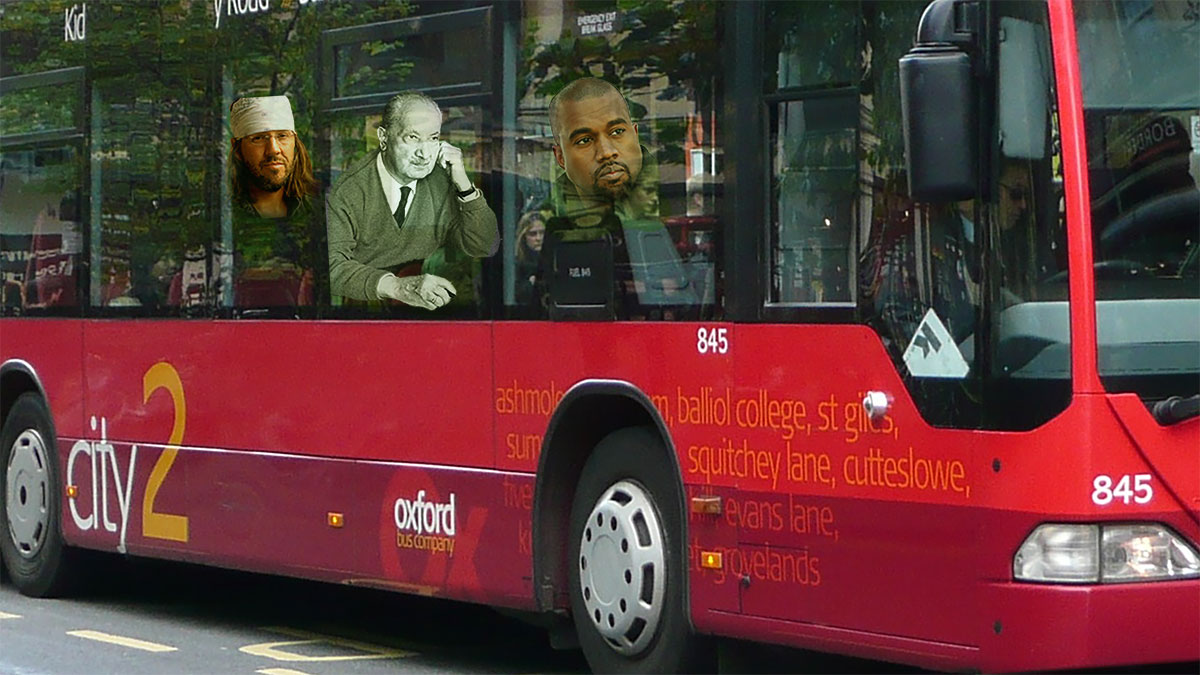Can we separate art from artist?
 Supplied
SuppliedRemember the petition against Kanye West’s Pan Am performance? It was initiated, apparently, because West is non-Canadian. Yet, we know it was actually initiated because of personal distaste towards West, made clear by the rhetoric of petitioners. Also, remember West’s recent VMA speech and the lotus swarm of Internet hate it summoned? In both cases, people boycotted an artist’s work because of an artist’s personality.
That said, nothing changes the fact that 808’s and Heartbreak was a radical game changer in hip-hop. Nothing makes My Beautiful Dark Twisted Fantasy any less influential. Nothing changes the fact that “Only One” invariably summons a divine challenge to your emotional capacities. In other words, nothing changes the fact that West is a brilliant artist. The only variable that has any bearing on West’s artistry, it turns out, is West’s art.
Does he sometimes act questionably? Answer however you like. Personal lives and art are as morally disparate as parallel universes. One tree’s having brown leaves doesn’t make another tree die, even if they come from the same soil.
This general movement of West’s “critics” is symptomatic; it wouldn’t frustrate me if it were singular. Instead, this basic underlying assumption quite extensively—this assumption, which amounts to a conflation: that the personal lives of artists and the work they produce have anything to do with one another.
The late writer David Foster Wallace has been given the same critical treatment. Wallace was an almost universally recognized genius, a writer whose debut came with instant canonization. He was the James Joyce or Hemingway of the 90’s, and he advanced the art of writing in a way that hadn’t been done since these literary gods.
Like any stereotypical artist, Wallace had a “complicated personality;” like any human, it was morally questionable at times. Critics delight in suggesting that Wallace had a huge, masculine, narcissistic ego that his writing acts as fulfillment for.
It is historical fact: Wallace was incredibly jealous; he had psychotic moments with girlfriends; he violently treasured the “getting laid” part of being famous. “Literary chauvinism” is a term used synonymously with Infinite Jest, and Wallace fans have even been herded together and called “lit bros,” which approximately means “hyper-masculine, pseudo-intellectual, hipster scum.”
But this is only half of the David Foster Wallace story. The blatant problem with these suggestions is that the man was well aware of his flaws. Wallace wrote about and criticized these very behaviors. Moreover, Wallace fought valiantly against depression, and it’s well known that despite every effort, he took his own life. So to say that Wallace’s work is a reflection of his thoroughly enjoying and embodying masculine privilege is, it would seem, backwards.
In other words, it doesn’t matter that Wallace screwed up, or that snotty men happen to like his writing. None of this takes away from the actual value of reading Wallace, which is extraordinarily high. Most of this value, in turn, actually comes from Wallace’s moral self-awareness.
We should contrast Wallace’s work with that of Martin Heidegger, the German philosopher. Heidegger was philosophical genius; he forever changed the way that we think about being human. The problem is that Heidegger was a Nazi sympathizer—a definite anti-Semite.
Can we divorce Heidegger’s Nazism from his philosophy? To this day, this is an ongoing debate. But this is philosophy, not art. Philosophy makes claims about how we should live. If a philosopher herself lives questionably, then her readers need to question her claims ruthlessly and absolutely. Art is a completely different enterprise: art makes no such claims. Art describes the world—how it feels.
This is exactly what Wallace did, and what West does. Because artists describe, we are actually left with a better chance of becoming morally sound creatures. But to be sure, art is not ethics, and this boundary should forever remain uncrossed by critics.




